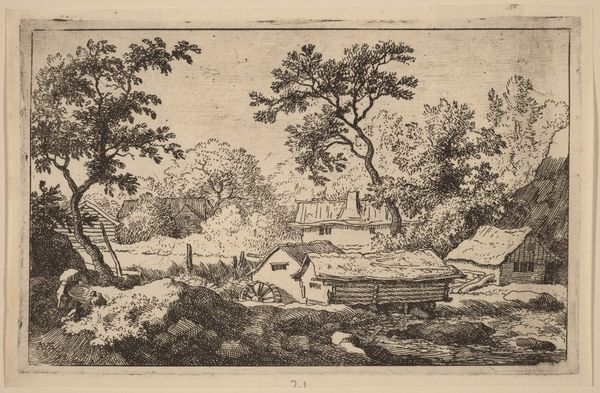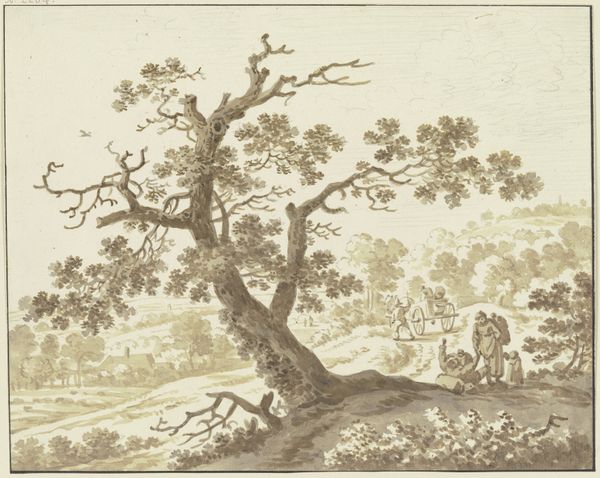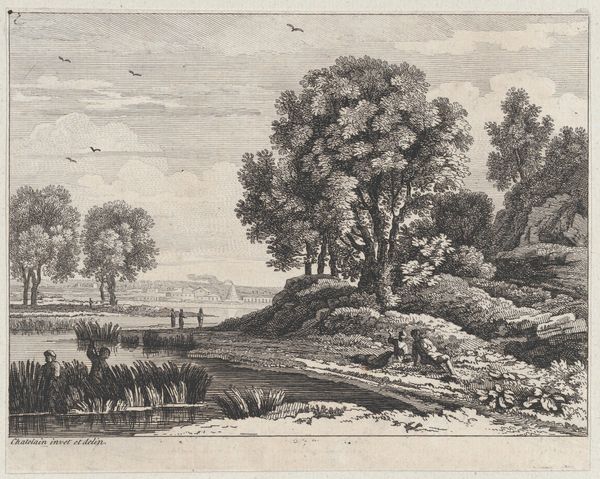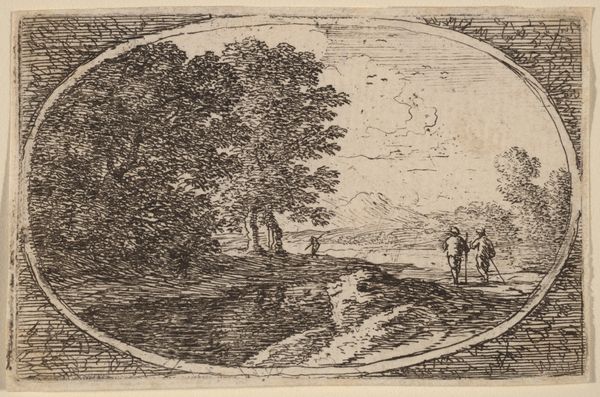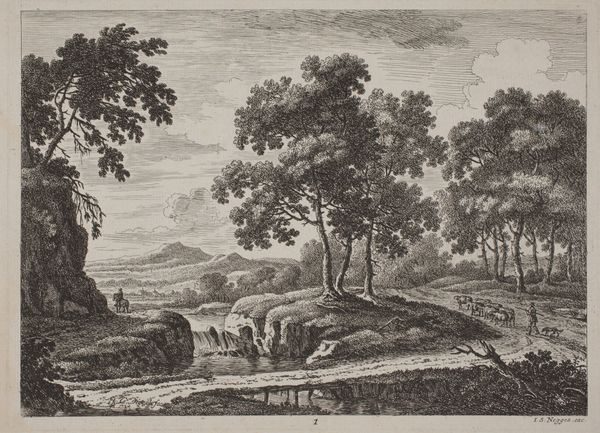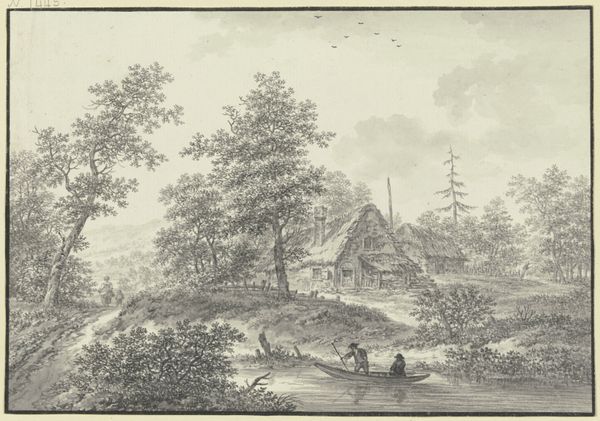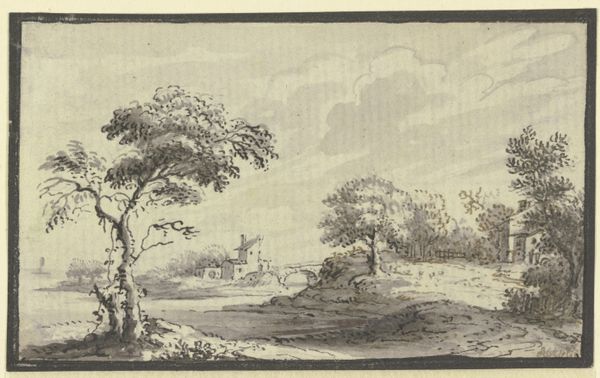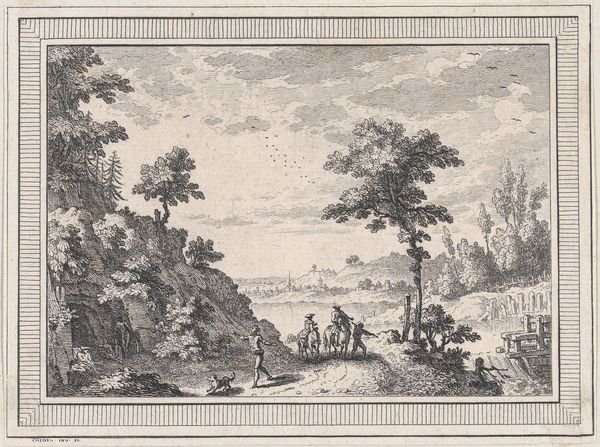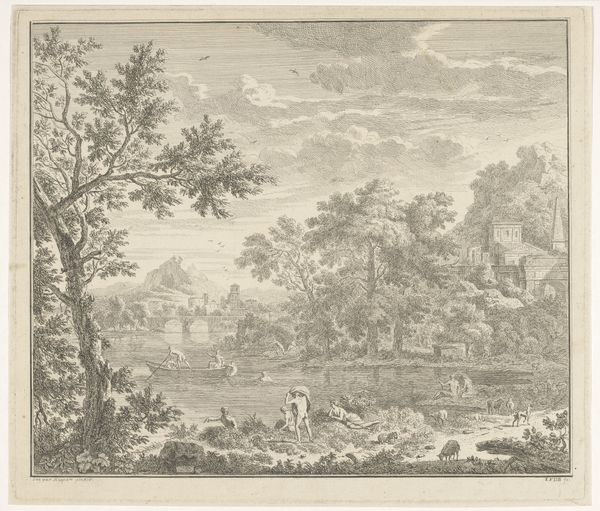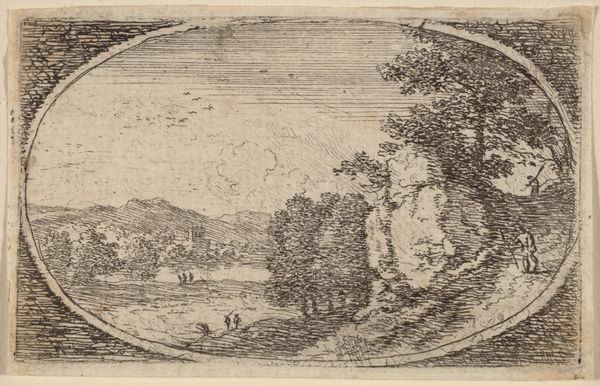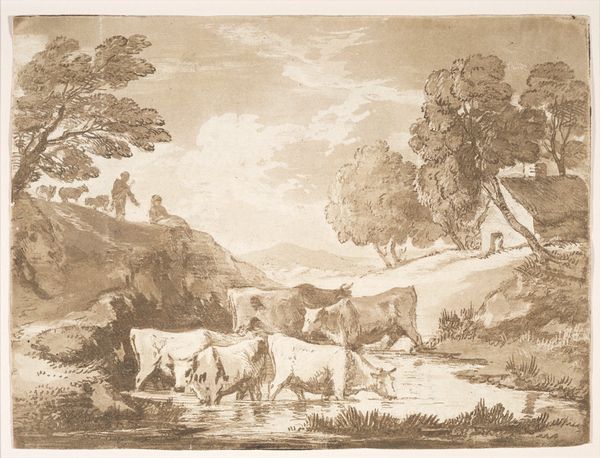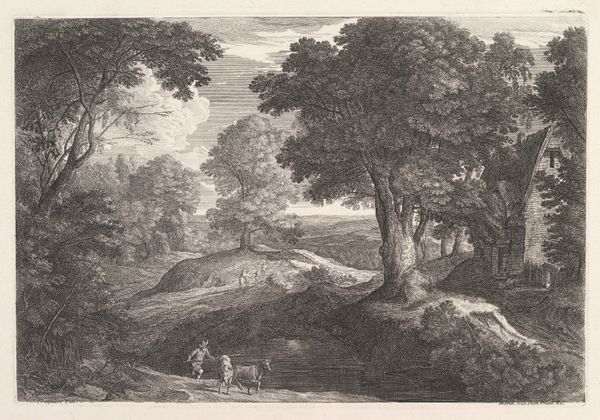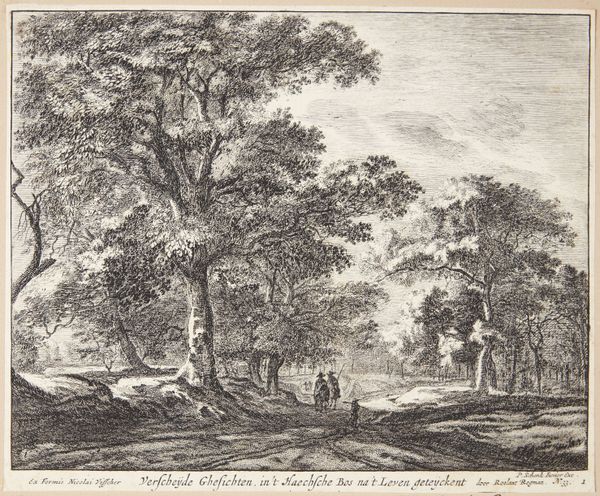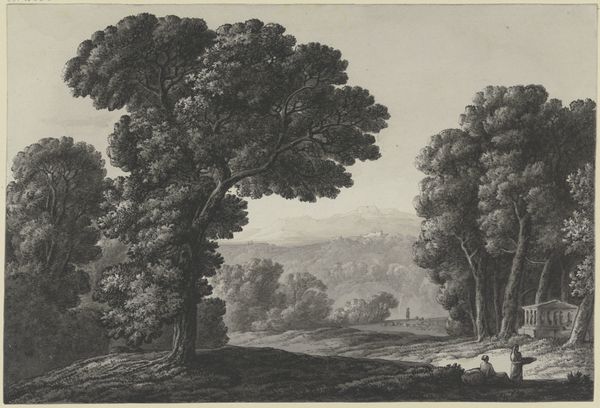
Weidendes Vieh am Waldrand, im Hintergrund ein befestigtes Gehöft
0:00
0:00
drawing, ink, pencil
#
drawing
#
landscape
#
figuration
#
ink
#
romanticism
#
pencil
#
genre-painting
#
realism
Copyright: Public Domain
Curator: What a wonderfully bucolic scene. "Weidendes Vieh am Waldrand, im Hintergrund ein befestigtes Gehöft," or "Cattle Grazing at the Edge of the Forest, with a Fortified Homestead in the Background," presents a pastoral vista by Friedrich Wilhelm Hirt. It is rendered in ink and pencil on paper. What strikes you initially? Editor: There's a strong sepia tonality that evokes a profound sense of quiet and nostalgia, like looking at a memory faded over time. The level of detail feels very precise. It also feels…contained? Curator: Yes, and the drawing gives insight into 19th-century rural life. We have the cattle at the forefront, likely essential to the local agrarian economy. The homestead suggests land ownership, wealth, and social hierarchy embedded within the landscape. It encourages us to ask how land usage and livestock maintenance shapes our social systems. Editor: Absolutely. The meticulous rendering draws attention to the labor involved, not just in depicting but also in producing this kind of rural idyll. Consider the artisanal crafting, a counterpoint to the mechanized possibilities brewing on the horizon in that era. How conscious was Hirt, you think, about that? Curator: It is tough to say. Yet, within Romanticism, as a movement, there exists an element of nostalgia, even resistance, towards industrial modernity. It also connects with a renewed sense of national identity where idealized depictions of the landscape became powerful cultural tools. The labor invested in making this art and in working the land are intrinsically linked to ideas around nationhood. Editor: I agree. Also, this interplay of human labor and natural resources is vital in a work that subtly pushes for a return to fundamental values amidst rapid societal transformation. A materialist view brings these tensions to the forefront. Curator: Precisely. Looking at this drawing then invites reflections on our evolving relationship with the environment and the persistent echoes of social hierarchies embedded in the rural landscapes, even today. Editor: Indeed, thinking about production processes both represented and actual—makes it a subtly forceful work. Thank you.
Comments
No comments
Be the first to comment and join the conversation on the ultimate creative platform.
